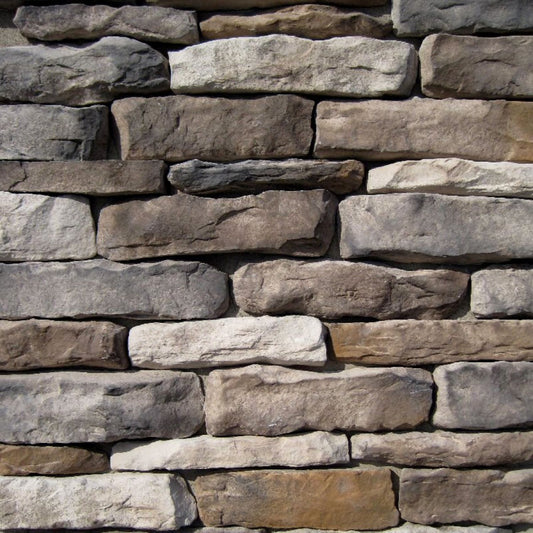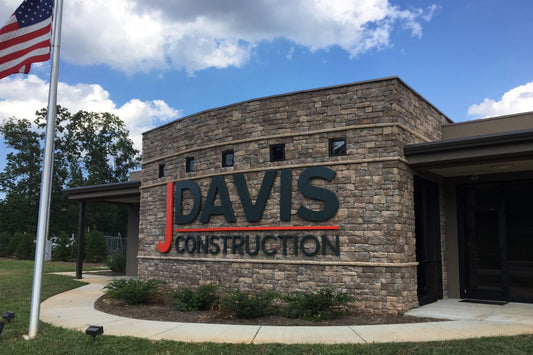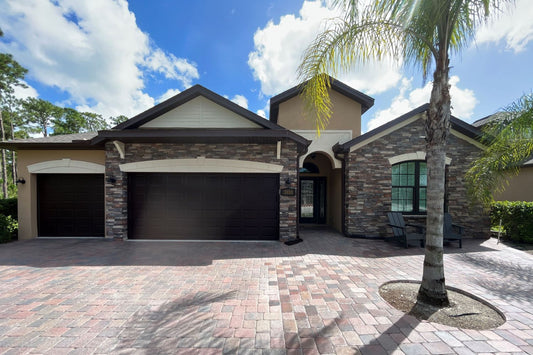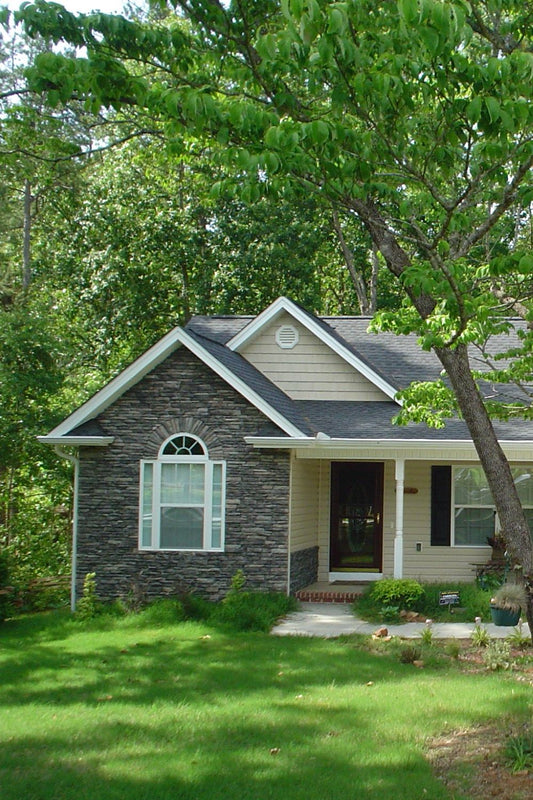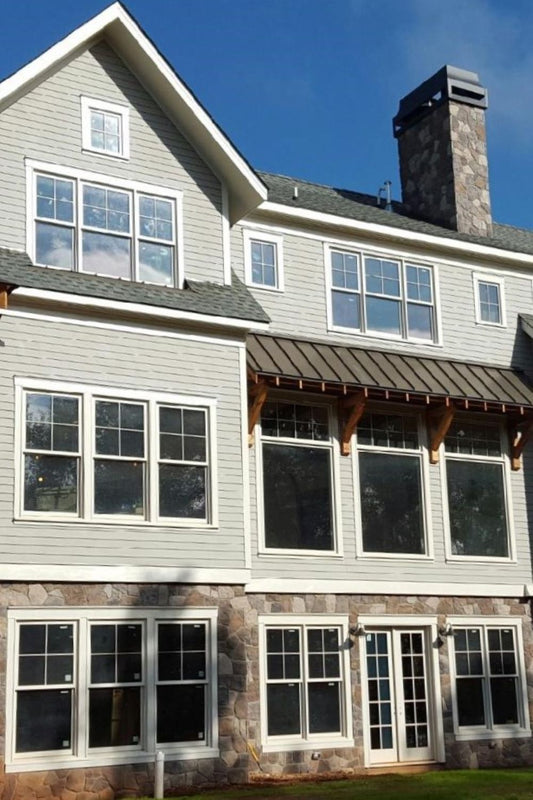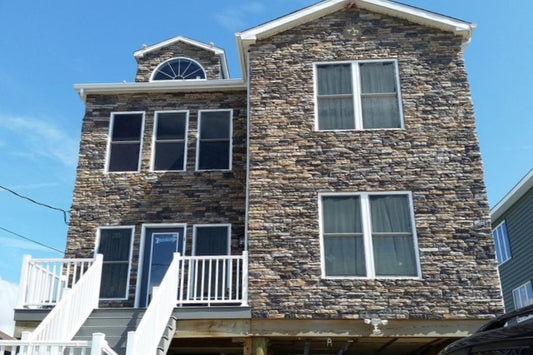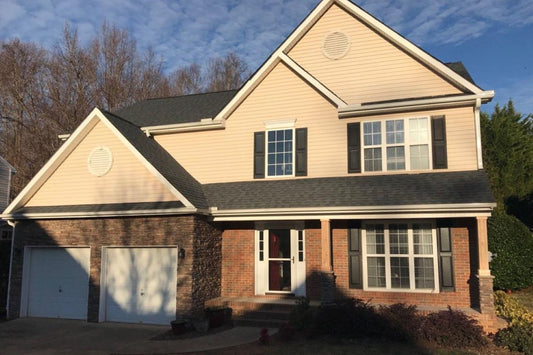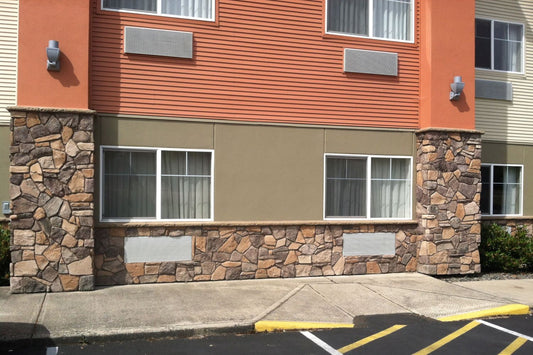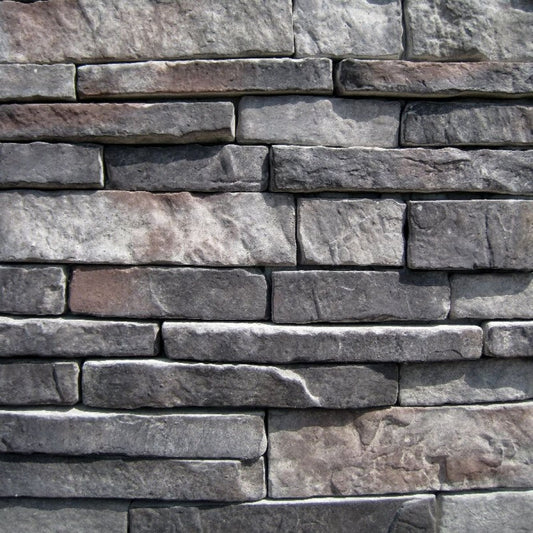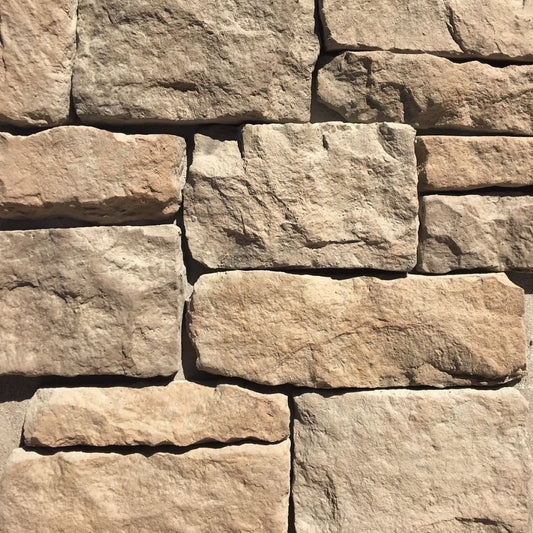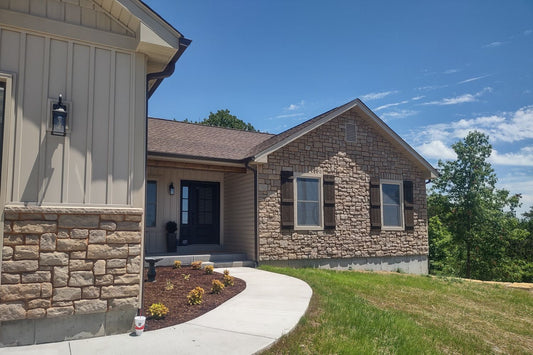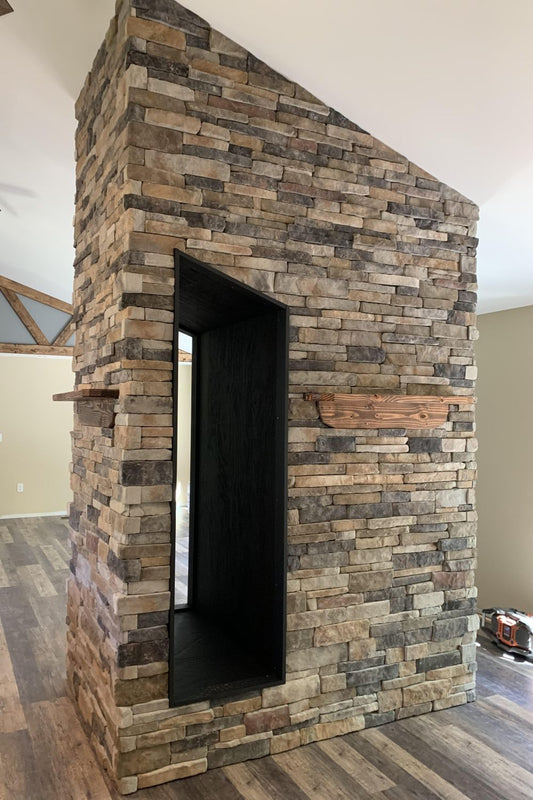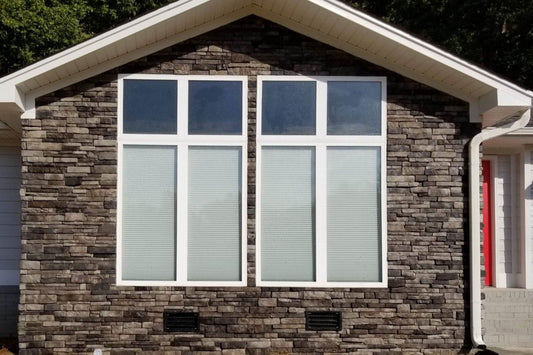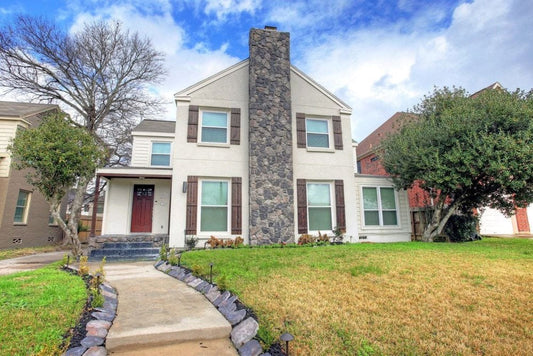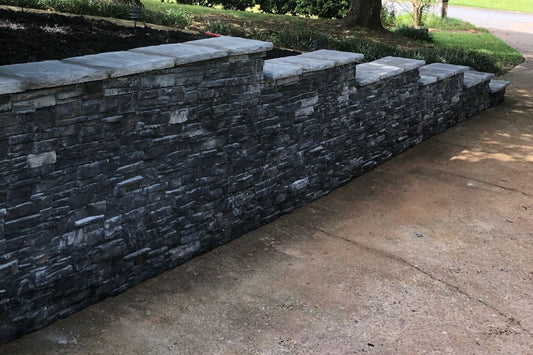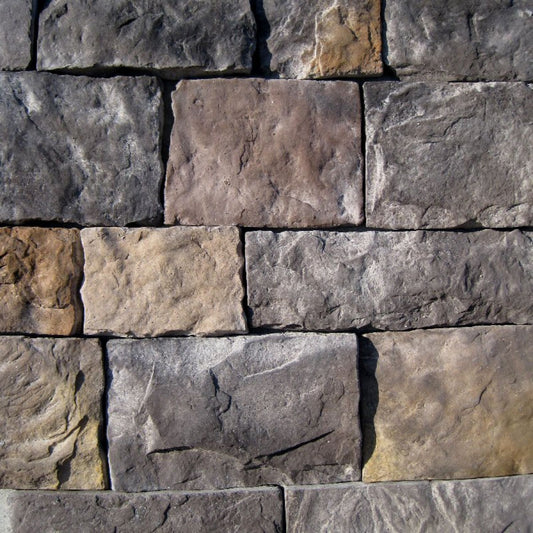
Shipping Costs Explained
Share
All Mountain View Stone orders (not including samples) have to ship LTL (less than truck load) in order to be delivered safely and efficiently, and to prevent damage to our stone veneer while in transit. Maybe you have heard of LTL shipping before, or maybe you are wondering why the shipping costs seem so high for your order compared to your most recent Amazon order. Explore the differences between LTL shipping and parcel shipping and the factors contributing to the cost of LTL shipping.
Originally posted September 25, 2023, updated January 12, 2026.
What is LTL (less than truck load) shipping?
LTL shipping is designed for larger shipments and heavyweight goods (such as our stone veneer) that do not fill an entire truck trailer. LTL consolidates multiple shipments from different senders into a single truck, optimizing space and cost efficiency. It's ideal for businesses and individuals with larger or heavier shipments that don't require a full truck.
The differences between LTL shipping and parcel shipping
Less than truckload shipping and parcel shipping are two very distinct methods of transporting goods, each catering to specific shipping needs. Compared to parcel shipping, which is designed for the quick and direct delivery of smaller, individual packages and often involves carriers like FedEx, UPS, or USPS that handle each shipment separately (your most recent Amazon order as an example), LTL focuses on efficiency and cost savings for larger shipments and heavyweight goods such as furniture, appliances, a variety of building materials, and of course our stone veneer. Another key difference is in the pricing structure. LTL shipping is usually based on factors like freight class, weight, volume, and distance, resulting in a variable cost per shipment. Parcel shipping, on the other hand, often employs flat-rate pricing or tiered rates based on package dimensions and destination, making it more predictable for smaller shipments. Overall, the choice between LTL and parcel shipping depends on the size, weight, and volume of the goods being shipped, as well as the specific needs and budget constraints of the shipper.
Less than truck load costs explained
LTL shipping is often praised for its cost-efficiency and flexibility, making it a preferred choice for many businesses and individuals. However, there are instances when LTL shipping can be surprisingly expensive. Many factors contributing to the expense of LTL shipping:
1. One of the key reasons behind the costliness of LTL shipping is the freight classification system. LTL carriers classify shipments based on the National Motor Freight Classification (NMFC) system, which assigns a freight class to goods based on their density, stowability, handling, and liability. The higher the freight class, the more you'll pay for shipping. Some items, due to their specific nature, may fall into a higher freight class, driving up shipping costs.
2. LTL carriers often apply accessorial charges for additional services or special requirements beyond basic pickup and delivery. These charges can include liftgate services, inside delivery, residential delivery, and more. These extra fees can quickly add up and significantly impact the overall cost of an LTL shipment.
3. The distance your shipment needs to travel and the geographical zones it crosses play a crucial role in determining LTL shipping costs. Longer distances and crossing multiple zones can substantially increase the shipping price, especially if your goods are traveling to remote or less-accessible areas.
4. While LTL shipping is designed for smaller than full truck load shipments, the total volume and weight of your goods still matter. As the weight and size of your shipment increase, so does the cost. This is because larger and heavier shipments take up more space on the truck, reducing the carrier's ability to consolidate other shipments and maximize efficiency.
5. Seasonal factors can also impact LTL shipping costs. During peak shipping seasons, such as the holiday rush, carriers may impose surcharges or increase rates due to high demand and limited capacity. These fluctuations can catch shippers off guard and result in unexpectedly high shipping costs.
6. The choice of LTL carrier can significantly affect the cost of shipping. Different carriers have varying pricing structures, accessorial charges, and service levels. It's essential to compare carriers to find the one that best aligns with your specific shipping needs and budget.
7. If your goods are not accurately classified according to the NMFC system or if the carrier determines that they were misclassified, you may incur additional charges. Ensuring the correct classification of your shipment is essential to avoid these unexpected costs.
Frequently asked questions
1. What does LTL shipping mean? LTL (less than truckload) shipping is a freight method designed for larger shipments that do not require a full truck. Multiple shipments from different senders are consolidated on a single truck, making it an efficient and cost-effective option for heavy or bulky goods like stone veneer.
2. How is LTL shipping different from parcel shipping? Parcel shipping handles smaller, individual packages and typically involves carriers like UPS, FedEx, or USPS. LTL shipping is for larger, heavier shipments, focusing on efficiency and cost savings. Unlike parcel shipping, LTL pricing is based on freight class, weight, volume, and distance.
3. Why is LTL shipping more expensive than parcel shipping? LTL shipping costs are influenced by factors like freight class, shipment weight and size, distance, seasonal demand, and carrier choice. These variables can make LTL more expensive than flat-rate parcel shipping for small orders.
4. What is freight class, and how does it affect LTL costs? Freight class is a system used to categorize shipments based on density, stowability, handling, and liability. Higher freight classes indicate more delicate or difficult-to-ship items and result in higher shipping costs.
5. Is LTL shipping safe for stone veneer? Absolutely. LTL shipping is ideal for heavy and fragile goods like stone veneer because it reduces the risk of damage during transit by consolidating shipments and using specialized handling methods.
Shipping costs explained
While LTL shipping is generally a cost-effective option for smaller than full truck load shipments, there are several factors that can drive up its price. Mountain View Stone understands these factors, and we take steps to mitigate their impact, such as accurate freight classification and carrier selection, in order to help you save on the shipping costs associated with your stone veneer order. Did you know that our website has a built-in freight calculator that bids out your stone veneer order to multiple freight partners and brokers in only a matter of seconds and returns the most affordable and efficient shipping possible? We are always adding new freight partners and working to reduce the shipping cost to you for your order without sacrificing on customer service or adding unnecessary delays in shipping.
You may also like
Does stone veneer break during shipping? What you need to know about delivery.
Save on shipping! Pick up your stone veneer: Save the shipping fees.
Shipping stone veneer: What you need to know for safe delivery.
What's next?
Ready to enhance your space? Shop now or order a sample to feel the quality and see the beauty for yourself!
Have a question?
Please see our full terms of service or check out our frequently asked questions.
For general information and questions please call: (864) 882-8960 Mon. - Fri. 8am - 5pm (EST) or email: info@mountainviewstone.net we are more than happy to help you.
Or you can submit your questions via our contact us page.
We look forward to working with you on your upcoming project.
The Mountain View Stone Team
Pictured is ready stack granite.

